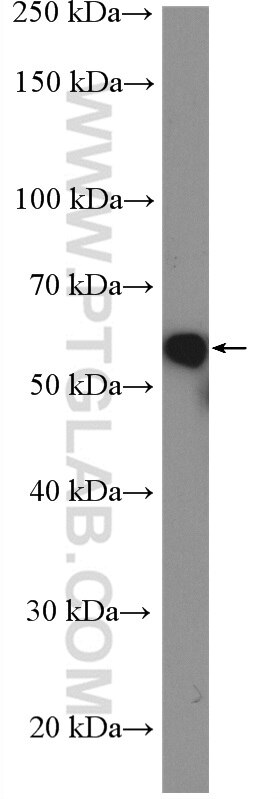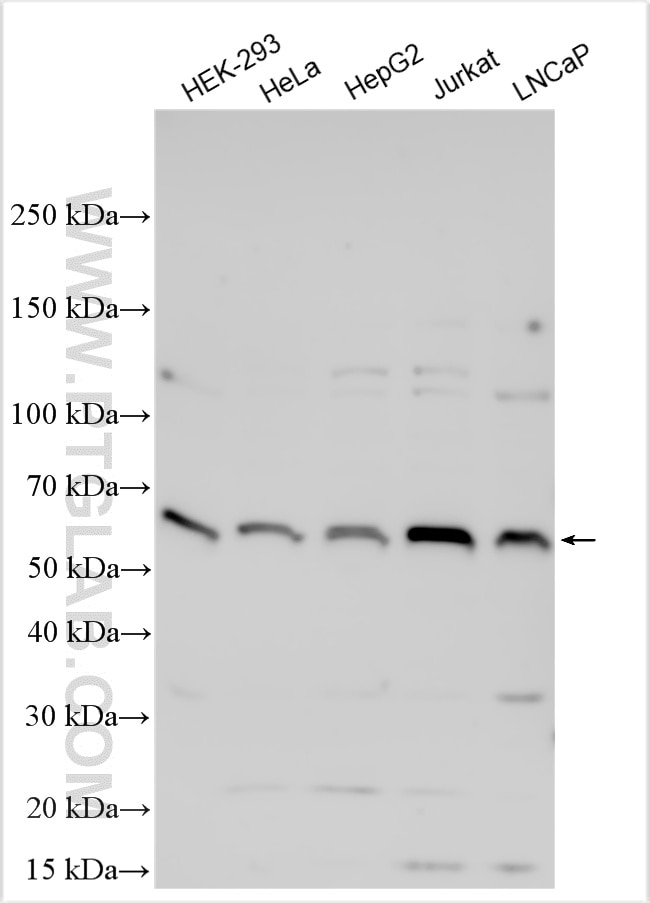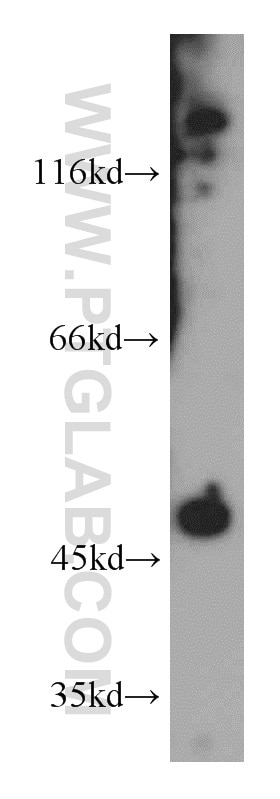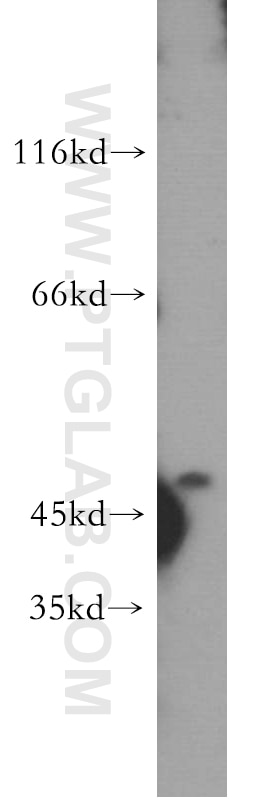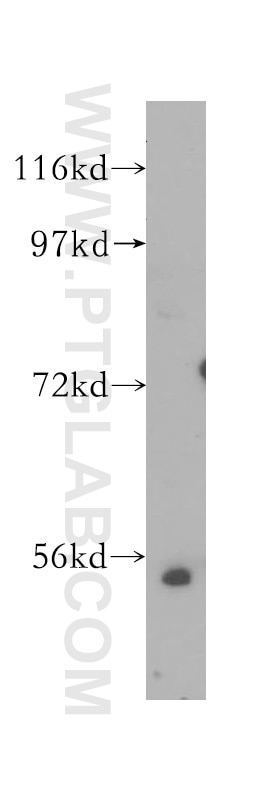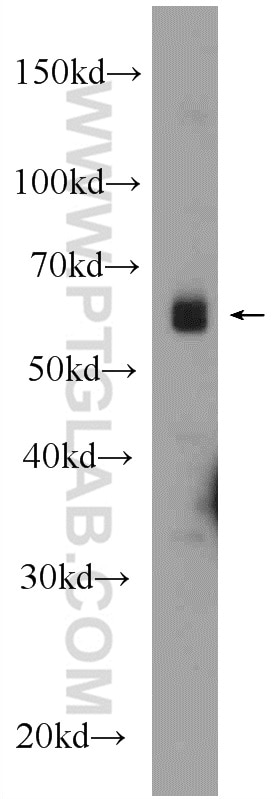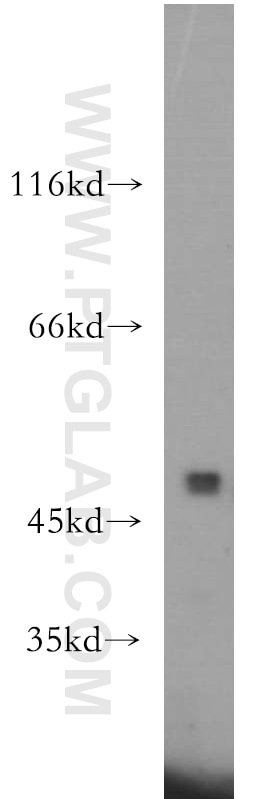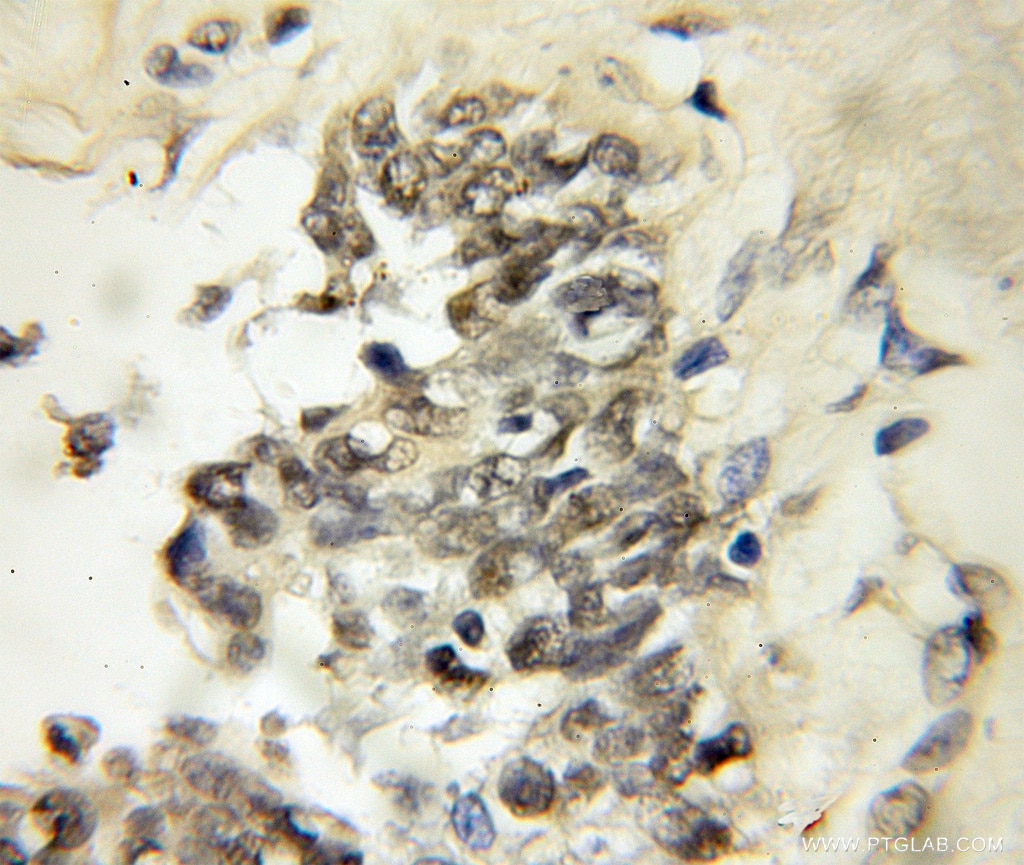Tested Applications
| Positive WB detected in | HEK-293 cells, A431 cells, HeLa cells, mouse brain tissue, NIH/3T3 cells, HepG2 cells, Jurkat cells, LNCaP cells |
| Positive IHC detected in | human breast cancer tissue Note: suggested antigen retrieval with TE buffer pH 9.0; (*) Alternatively, antigen retrieval may be performed with citrate buffer pH 6.0 |
Recommended dilution
| Application | Dilution |
|---|---|
| Western Blot (WB) | WB : 1:500-1:2000 |
| Immunohistochemistry (IHC) | IHC : 1:50-1:200 |
| It is recommended that this reagent should be titrated in each testing system to obtain optimal results. | |
| Sample-dependent, Check data in validation data gallery. | |
Published Applications
| KD/KO | See 5 publications below |
| WB | See 48 publications below |
| IHC | See 5 publications below |
| IF | See 1 publications below |
| IP | See 1 publications below |
Product Information
12171-1-AP targets E2F1 in WB, IHC, IF, IP, ELISA applications and shows reactivity with human, mouse, rat samples.
| Tested Reactivity | human, mouse, rat |
| Cited Reactivity | human, mouse, artemia sinica |
| Host / Isotype | Rabbit / IgG |
| Class | Polyclonal |
| Type | Antibody |
| Immunogen |
CatNo: Ag2813 Product name: Recombinant human E2F1 protein Source: e coli.-derived, PGEX-4T Tag: GST Domain: 88-438 aa of BC050369 Sequence: VKRRLDLETDHQYLAESSGPARGRGRHPGKGVKSPGEKSRYETSLNLTTKRFLELLSHSADGVVDLNWAAEVLKVQKRRIYDITNVLEGIQLIAKKSKNHIQWLGSHTTVGVGGRLEGLTQDLRQLQESEQQLDHLMNICTTQLRLLSEDTDSQRLAYVTCQDLRSIADPAEQMVMVIKAPPETQLQAVDSSENFQISLKSKQGPIDVFLCPEETVGGISPGKTPSQEVTSEEENRATDSATIVSPPPSSPPSSLTTDPSQSLLSLEQEPLLSRMGSLRAPVDEDRLSPLVAADSLLEHVREDFSGLLPEEFISLSPPHEALDYHFGLEEGEGIRDLFDCDFGDLTPLDF Predict reactive species |
| Full Name | E2F transcription factor 1 |
| Calculated Molecular Weight | 437 aa, 47 kDa |
| Observed Molecular Weight | 55 kDa |
| GenBank Accession Number | BC050369 |
| Gene Symbol | E2F1 |
| Gene ID (NCBI) | 1869 |
| RRID | AB_2096958 |
| Conjugate | Unconjugated |
| Form | Liquid |
| Purification Method | Antigen affinity purification |
| UNIPROT ID | Q01094 |
| Storage Buffer | PBS with 0.02% sodium azide and 50% glycerol, pH 7.3. |
| Storage Conditions | Store at -20°C. Stable for one year after shipment. Aliquoting is unnecessary for -20oC storage. 20ul sizes contain 0.1% BSA. |
Background Information
Transcription factor E2F1 (E2F1), also known as RBBP3, is a transcription activator that binds DNA cooperatively with dp proteins through the E2 recognition site, 5'-TTTC[CG]CGC-3' found in the promoter region of a number of genes whose products are involved in cell cycle regulation or in DNA replication. The DRTF1/E2F complex functions in the control of cell-cycle progression from G1 to S phase. E2F-1 binds preferentially RB1 protein, in a cell-cycle dependent manner. It can mediate both cell proliferation and p53-dependent apoptosis. This antibody is a rabbit polyclonal antibody raised against the C-terminal 350 aa sequence of E2F1 protein, specifically recognizes the 47kd human E2F1 protein. The sumoylated E2F1 is bout 55 kDa.
Protocols
| Product Specific Protocols | |
|---|---|
| IHC protocol for E2F1 antibody 12171-1-AP | Download protocol |
| WB protocol for E2F1 antibody 12171-1-AP | Download protocol |
| Standard Protocols | |
|---|---|
| Click here to view our Standard Protocols |
Publications
| Species | Application | Title |
|---|---|---|
J Clin Invest TALEN-mediated targeting of HPV oncogenes ameliorates HPV-related cervical malignancy. | ||
Nat Commun Identification of predictors of drug sensitivity using patient-derived models of esophageal squamous cell carcinoma. | ||
Cancer Lett The oncoprotein HBXIP up-regulates SCG3 through modulating E2F1 and miR-509-3p in hepatoma cells.
| ||
Int J Nanomedicine E7-Targeted Nanotherapeutics for Key HPV Afflicted Cervical Lesions by Employing CRISPR/Cas9 and Poly (Beta-Amino Ester) | ||
Mol Ther Nanoparticles Based on Poly (β-Amino Ester) and HPV16-Targeting CRISPR/shRNA as Potential Drugs for HPV16-Related Cervical Malignancy. | ||
Cell Death Dis SEC61G promotes breast cancer development and metastasis via modulating glycolysis and is transcriptionally regulated by E2F1.
|
